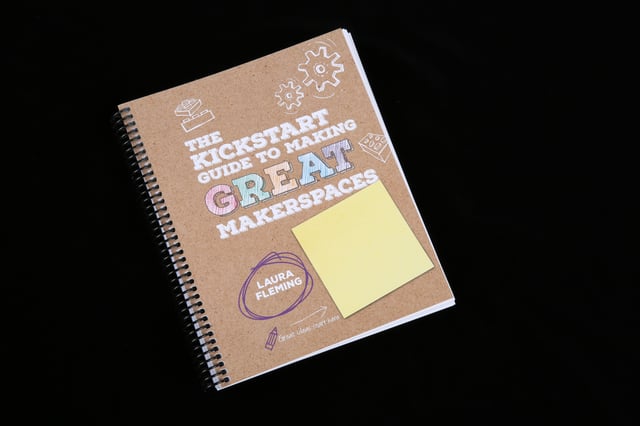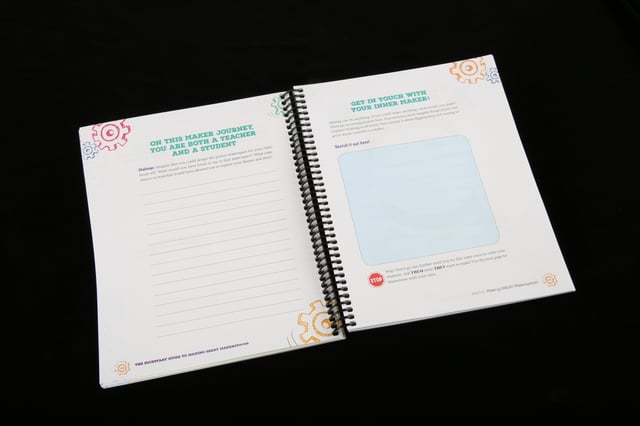We were lucky enough to get our hands on a promotional copy of Laura Fleming’s new book, "The Kickstart Guide to Making Great Makerspaces." Here are some of the top things we learned and reasons why you should read this book if you are planning a makerspace or looking to make your current one even better.

Makerspaces are Always Changing
In the introduction to her book, Fleming points out that “Makerspaces are never done. GREAT makerspaces are always growing, evolving, and shape-shifting, and by nature are agile and responsive.”
This is an important reminder when creating a makerspace. Too often a makerspace is considered complete once it is ready for student use and all the parts are in place. In reality, this is only the beginning. The makerspaces that both students and educators keep coming back to are the ones that evolve to meet the needs of those using the space.
Simply creating the same makerspace as everyone else is not going to help your students. To make the space as effective as possible, it is important to watch how students and educators interact with the space, listen to what they are asking for and adjust the space as needed to best suit their needs.
Real Examples of GREAT Makerspaces
Throughout the book, Fleming includes stories of what actual schools and educators are doing to make their makerspaces work for them. These examples show that everyone has a different approach, and you can glean helpful ideas for making your makerspace even better. Reading about theory only goes so far; many times the best way to learn is by observing what actually works for others and finding ways to adapt those ideas for your own use. In her book, Fleming strikes a good balance between explaining with theory and showing real examples.
Room for Your Thoughts

Throughout the book, there are spaces and pages dedicated to allowing the reader to fill in their thoughts. Instead of waiting until the end, or expecting you to work through your ideas somewhere else, Fleming provides room for the reader to jot down thoughts and get involved in the book. In fact, there is an entire chapter dedicated to helping the reader work through their ideas and design the best makerspace for their needs.
All this room to think and create throughout the book really helps the reader get into the maker mindset — considering both what it takes to create a makerspace and how that space will be used. The whole point of a makerspace is to allow students room to explore their ideas and create something new. This book provides that same experience by allowing you room to organize your thoughts and formulate a plan for your own makerspace.
Passion for Makerspaces
One of the things that stood out to me the most while reading through this book was Fleming’s passion for makerspaces. It’s difficult not to get excited about the possibilities for learning and student engagement that can occur within a makerspace while reading this book. It’s clear that Fleming views makerspaces as a place for students to become excited about learning and, just as importantly, that the possibilities presented by makerspaces excite her. This passion rubs off on the reader and is an important part of creating a GREAT makerspace. If you, the educator, are not excited about the possibilities within the space, then it will be difficult for students to become excited. Let your passion show through, and great things will happen within your makerspace.
"The Kickstart Guide to Making Great Makerspaces" by Laura Fleming is a great read for anyone who is looking to create a makerspace or expand their current space. It's also a must-read for anyone who has lost the initial enthusiasm for an existing makerspace. Check it out for yourself and give us your review in the comments!



makerspace, getting started